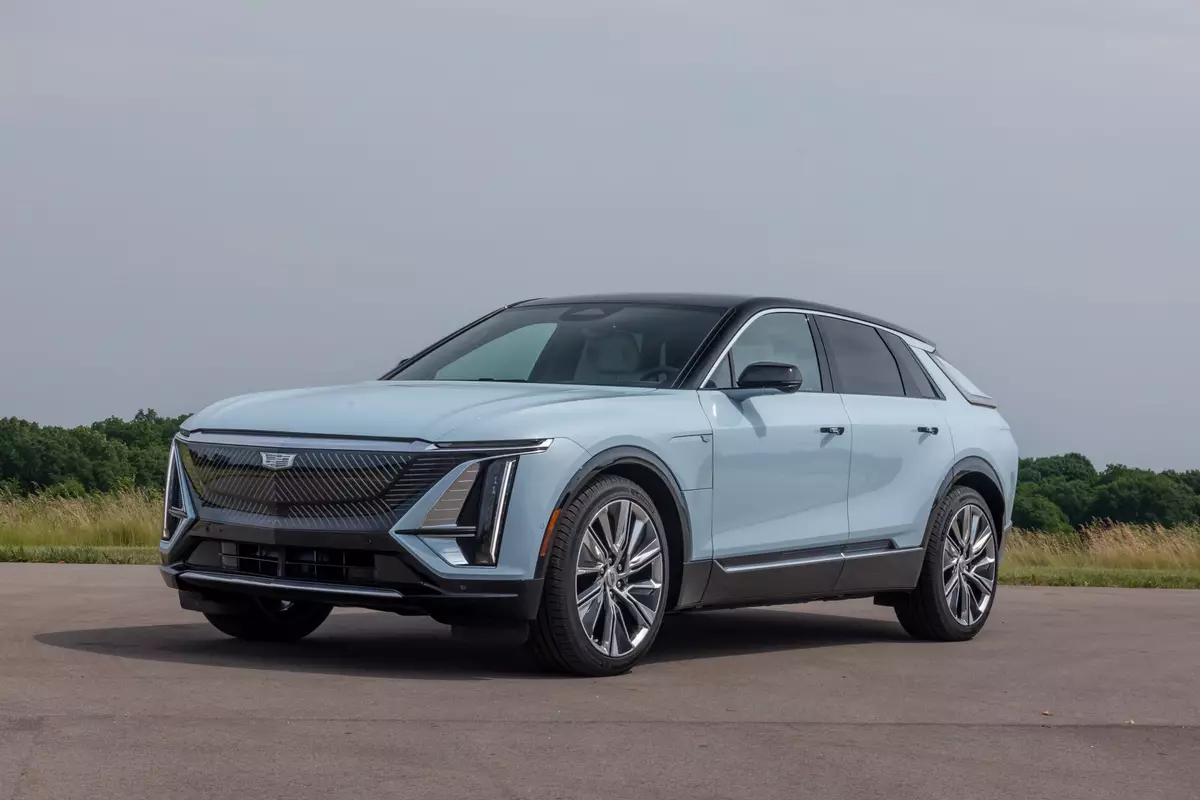chicagotribune.com's view
The engineers and designers who spent 24/7 the last two years developing the next-generation Accord need to sneak out to a movie or play a round of golf.
When Charlie Baker, project leader for the crew that produced the ’03 Accord, says the vehicle’s design is patterned after a cheetah and that the bulges in the sheet metal represent the cat’s muscles–and his staff nods in agreement–it’s time to put down the modeling clay and take a reality break.
Goodness, if these folks worked at Ford would the Mustang come with a saddle?
At a preview of the ’03 Accord here, a few members of the media dashed to the parking lot to beat the crowd to one of the handful of cars available to test drive–only to speed away in ’02 models on hand for comparison purposes.
Honda loyalists will be able to tell Gen VII from all the other Gens that came before it. But to the casual observer, park a VII next to a VI and it’s a coin flip. Though patterned after the cheetah, no ’03 Accord comes with spots.
Sedan and coupe have been redesigned, and the pair share only headlights, no sheet metal.
Tom Elliott, executive vice president of Honda, best summed up the design philosophy of the new Accord by stating: “It won’t offend anyone.”
That it won’t. Not dramatic like a Cadillac CTS or a Chrysler PT Cruiser, but it won’t show age spots in five years, either. And consumers have accepted that while Honda has earned a reputation for reliability, dependability and durability, it never has been a fashion trendsetter.
The redesign may be modest, but the re-engineering is extensive. Out went the 2.3-liter, 150-horsepower 4-cylinder and 3-liter, 200-h.p. V-6 in favor of a new 2.4-liter, 160-h.p. 4 and a new 3-liter, 240-h.p. V-6.
Suspension, brakes and steering have been revised for the slightly longer (1 inch to the wheelbase), wider (1 inch) and taller (a whisker) ’03 Accord, while the cabin got a fashion update.
Accord is offered in LX and EX coupe and DX, LX and EX sedan versions with choice of 4-cylinder or V-6 (not DX) engines and new 5-speed manual or new 5-speed automatic.
The V-6 coupe will add a high-performance version with 6-speed manual transmission, 17-inch radial tires and a sports-tuned suspension in January.
We tested the top-of-the-line EX sedan with its smooth and whisper-quiet V-6, which thanks in part to the new 5-speed automatic, is rated at an impressive 21 m.p.g. city/30 m.p.g. highway for a midsize sedan, up from 20/28.
The V-6 is lively and quick to respond. It took only light pedal pressure to climb the steep inclines or pass the never-ending stream of 18-wheelers prowling Interstate Highway 94. If only the outside mirrors were wider to provide a better view of vehicles that disappear into the blind spot on each side.
The double wishbone suspension was modified and retuned to reduce body motion under acceleration and decelerati on for flatter cornering and more luxury-sedan-like ride and sports-sedan-like handling.
Little road harshness filters back into the cabin while handling benefits from an upgrade to 16- from 15-inch all-season radial tires for ’03. Power steering revisions minimize wheel play for more control and stability when pulling out to pass, taking turns or rounding corners.
A major redesign of the seats–now two inches wider and one inch taller and offering more side bolster support to hold you in place–provides more tailbone support where seat bottom meets seat back. You don’t experience the normal fatigue that sets in when traveling 300 miles nonstop.
Honda insists Accord’s muscular cheetah shape outside is complemented by emotional appeal in the cabin, such as an instrument panel with “progressive illumination” that establishes a “dialog” with the motorist.
Insert the ignition key and the instrument panel dials/gauges light up as if to say “hello,” Honda say Never heard a “howd” from the IP but did have frequent and emotional conversations with the “electronic” woman you have to deal with to get the optional, voice-activated DVD Navigation system to function.
Press a button on the steering column and voice a command to turn the navigation system on/off and direct it to map a routing home or to a restaurant or hotel. The system also has voice-activated on/off climate and radio controls.
Great in theory, but when asking for “radio-play” the woman’s voice responded “climate off” and when asking for “radio-off” she replied “say yes or no to program your destination.” Within minutes, the “radio-play” request became a demand: “Hey, lady, turn the @X**# radio on!”
Sounds filtering through an open window or moonroof or folks talking in the cabin confuse the system.
If you tell the voice-activated system to map the route home and it responds by turning on the radio, you can still get the navi to work by touching prompts on the screen.
A system that boasts it allows you to “focus on the road ahead” loses its appeal when you have to take your eyes off the road to find and touch the prompts.
We hope Honda and IBM, which came up with the system, will have worked out the bugs by year-end, when the system is offered as an option.
Though the navi system has shortcomings, there’s a wealth of noteworthy features, such as a surprisingly large rear cabin with spacious leg, head and arm room for adults; a rear-seat pull down armrest with built-in dual cupholders should the cupholders built into the doors not be enough; a ski pass-through from cabin to trunk to carry long items–skis, of course–in the car; and a massive trunk with ample room for luggage and/or golf clubs. If more cargo room is needed, the rear seat backs fold flat.
Another nice touch: You can lock/unlock doors and open/close windows by pressing the key fob or turning the key in the door lock.
As for safety, the EX comes with four-wheel anti-lock brakes with traction control (optional in all other models) and dual front/side air bags and side air-bag curtains (optional in all but the DX).
Side-impact bag sensors detect whether the front-passenger seat occupant is a child (who belongs in the back seat to begin with) or small adult leaning too close to the bag. If so, it won’t deploy.
The front bags are the dual-stage type whose deployment speed is based on severity of impact and whether occupants are belted.
Firm prices have not been announced, but Elliott said the ’03 EX V-6 will start at about $25,000, including about $1,450 worth of new equipment–heated seats, outside temp gauge, tilt/telescoping steering wheel, and dual-zone air conditioning along with the air-bag curtains, higher output V-6, 5-speed automatic and larger radials–added at a discount.
About the only option available will be the navi system for those who handle frustration well.
For ’03 Accord should continue its streak of selling at least 400,000 copies, as it has done annually for 10 years.
Latest news



